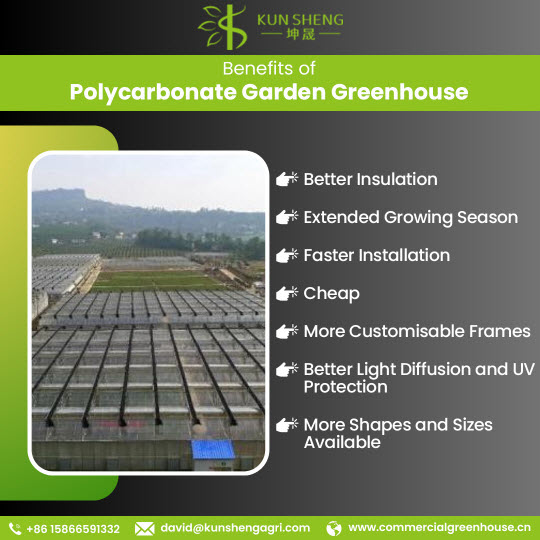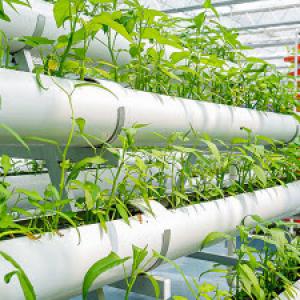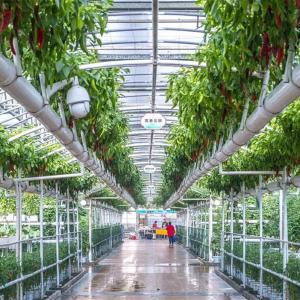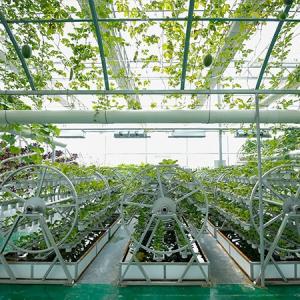Comparing Polycarbonate vs. Glass: Why Polycarbonate Greenhouses Are Gaining Popularity
When embarking on the construction of a greenhouse, the choice of materials holds immense significance in determining its overall performance and durability. Among the most popular options available are polycarbonate and glass. Each material offers unique features and benefits, catering to diverse greenhouse needs. Polycarbonate, a lightweight and sturdy thermoplastic, has gained increasing popularity due to its exceptional impact resistance and ability to withstand harsh weather conditions. Its high light transmission ensures plants receive ample sunlight for optimal growth, while the added UV protection shields them from harmful rays. Moreover, polycarbonate's versatility allows for various designs, accommodating specific greenhouse requirements.
On the other hand, glass, a timeless and classic choice for greenhouses, holds its position as a favorite among horticulturists. With its unparalleled clarity, glass allows maximum light penetration, creating an ideal environment for plant growth. Glass greenhouses add an elegant touch to any garden or landscape, contributing to their aesthetic appeal. While not as impact-resistant as polycarbonate, well-maintained glass structures can boast impressive longevity. They provide excellent insulation, effectively retaining heat and reducing energy costs. For those seeking a more traditional greenhouse setting with superior light transmission and insulation, glass remains an attractive option.
The decision between polycarbonate and glass comes down to specific needs and preferences. For individuals prioritizing durability, impact resistance, and design versatility, polycarbonate proves to be an excellent choice. Conversely, those who value aesthetic appeal, superior light transmission, and insulation may find glass to be the better option. Climate, budget constraints, and long-term goals for the greenhouse project also play vital roles in this decision-making process.
The Rise of Polycarbonate Greenhouses
Polycarbonate greenhouses have experienced a remarkable surge in popularity, capturing the attention of horticulturists and gardeners in recent years. This growing demand can be attributed to several compelling reasons, making these innovative structures a top choice for modern greenhouse solutions.
One of the primary reasons for the rise of polycarbonate greenhouses is their exceptional durability and strength. Unlike traditional glass greenhouses, polycarbonate structures are highly impact-resistant, able to withstand harsh weather conditions, such as heavy rain, hail, and strong winds. This robustness ensures longevity and reduces the need for frequent repairs or replacements, making them a cost-effective option in the long run.
Additionally, polycarbonate greenhouses offer superior light diffusion. The unique design of polycarbonate panels allows light to spread evenly across the entire growing area, minimizing shadows and providing plants with consistent access to sunlight. This feature promotes healthy and uniform plant growth, ultimately leading to higher yields and better-quality produce.
The increasing focus on sustainability and energy efficiency has also driven the preference for polycarbonate greenhouses. Compared to traditional glass structures, polycarbonate requires less energy to maintain the desired temperature. The reduced energy consumption not only benefits the environment but also results in lower operational costs for greenhouse owners.
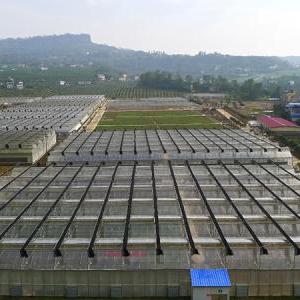
Advantages of Polycarbonate Greenhouses
Polycarbonate greenhouses present a wide array of advantages that set them apart from traditional glass structures, making them the preferred material for modern greenhouse construction.
One of the key advantages of polycarbonate greenhouses is their unmatched durability. Polycarbonate panels are highly impact-resistant, capable of withstanding strong winds, heavy hail, and other adverse weather conditions. This robustness ensures that the greenhouse remains intact and functional over an extended period, reducing maintenance costs and providing a more reliable growing environment for plants.
Another crucial benefit is the excellent UV protection offered by polycarbonate. These greenhouse panels are designed to filter harmful ultraviolet rays while allowing beneficial sunlight to pass through. By shielding plants from excessive UV exposure, polycarbonate ensures healthier growth and minimizes the risk of sun damage.
Polycarbonate greenhouses also excel in energy efficiency. Compared to traditional glass structures, polycarbonate panels have better insulation properties, retaining heat more effectively. This insulation capability helps to maintain a stable and controlled environment inside the greenhouse, reducing the need for excessive heating during colder months and conserving energy.
Additionally, polycarbonate's high light diffusion is advantageous for plant growth. The panels disperse light evenly throughout the greenhouse, preventing shadows and ensuring that all plants receive sufficient sunlight. This uniform distribution of light promotes consistent growth and improved crop yields.
Moreover, polycarbonate greenhouses offer design flexibility, allowing customization to suit specific needs and preferences. Available in various thicknesses and configurations, growers can select the most appropriate polycarbonate panels for their climate and growing requirements. This adaptability enables the optimization of the greenhouse environment for different crops and regional conditions.
Weather Resistance and Impact Strength
Weather resistance and impact strength are critical factors to consider when choosing between polycarbonate and glass for your greenhouse, as these structures are exposed to various weather conditions and potential hazards.
Polycarbonate greenhouses demonstrate remarkable weather resistance, making them highly suitable for harsh climates. The thermoplastic composition of polycarbonate panels provides exceptional durability, enabling them to withstand heavy rain, snow, and strong winds without succumbing to damage. Their resistance to extreme temperatures also ensures they can endure freezing winters and scorching summers, providing a stable environment for plant growth year-round.
In contrast, traditional glass greenhouses may face challenges when dealing with adverse weather. Glass, though inherently strong, can be more susceptible to damage from hail, especially if it is of significant size or intensity. Extreme temperature fluctuations may also pose a risk, as the rigid nature of glass can lead to potential cracking or breakage under stress.
When it comes to impact strength, polycarbonate once again excels over glass. The flexible nature of polycarbonate panels allows them to absorb impacts without shattering, making them highly resistant to hail damage or accidental impacts. This feature significantly reduces maintenance and replacement costs, ensuring your greenhouse remains operational and productive over the long term.
On the other hand, glass, while relatively robust, can break upon impact, necessitating immediate repairs or replacement. The risk of glass shattering can lead to interruptions in plant growth and productivity, making it a less favorable option in areas prone to severe weather events.
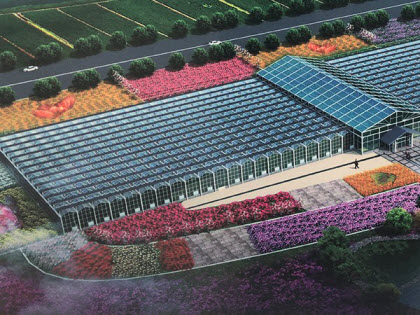
Flexibility and Design Options
Flexibility and design options are essential considerations when planning a greenhouse, as they directly impact its functionality and aesthetics. Both polycarbonate and glass offer distinct design features, allowing greenhouse owners to tailor their structures to meet specific requirements.
Polycarbonate greenhouses boast impressive design flexibility. The lightweight and flexible nature of polycarbonate panels enables the creation of various greenhouse shapes and sizes, catering to individual preferences and available space. Whether you envision a traditional gable-roofed structure or a modern curved design, polycarbonate can adapt to your vision. The panels can be easily cut and shaped, facilitating customized designs that optimize the use of available space and create an efficient layout for plant cultivation.
Furthermore, polycarbonate greenhouses come in different panel thicknesses, offering varying levels of insulation and light diffusion. Growers can select the most appropriate panel thickness based on their regional climate and the light requirements of their plants. This customization allows for better control over the greenhouse environment and ensures optimal growing conditions for different crops.
In contrast, glass greenhouses, while less flexible than polycarbonate, still provide a classic and elegant aesthetic. The transparency and clarity of glass create a visually appealing structure that enhances the overall appeal of the garden or landscape. Glass greenhouses can showcase plants and flowers in a more traditional and charming setting, making them a preferred choice for those seeking a timeless and picturesque greenhouse.
However, the design options with glass may be relatively limited compared to polycarbonate. Glass panels typically come in standard sizes and shapes, constraining the range of design possibilities. While certain modifications can be made, such as incorporating gable or curved roofs, the flexibility is not as extensive as with polycarbonate.
Cost-Effectiveness and Long-Term Savings
When evaluating the cost-effectiveness and long-term savings of greenhouse options, both polycarbonate and glass structures present distinct factors to consider.
Polycarbonate greenhouses often prove to be more cost-effective in the long run. Although their initial investment may be slightly higher than traditional glass structures, polycarbonate's exceptional durability significantly reduces maintenance costs over time. Unlike glass, which may require frequent repairs or replacements due to breakage, polycarbonate panels are highly impact-resistant and less prone to damage. This lowers maintenance expenses and ensures a longer lifespan for the greenhouse, resulting in considerable savings in the long term.
Moreover, polycarbonate's energy-efficient properties contribute to significant cost savings. Its superior insulation capabilities reduce the need for excessive heating during colder months, minimizing energy consumption and lowering utility bills. The ability to create a stable and controlled environment allows for extended growing seasons, increasing the overall yield and revenue potential for greenhouse owners.
On the other hand, while glass greenhouses may have a lower initial investment, they can become costlier in the long run due to higher maintenance and energy expenses. The inherent fragility of glass makes it more susceptible to breakage, necessitating timely repairs and replacements that add to overall costs. Additionally, glass's lower insulation capabilities may result in higher heating expenses, particularly in regions with colder climates, further impacting long-term savings.
The lifespan of polycarbonate greenhouses is generally longer than that of glass structures. The impact-resistant nature of polycarbonate allows it to endure weather challenges and potential hazards, ensuring a more extended service life. In contrast, glass may require more frequent replacement due to breakage or wear and tear, adding to greenhouse ownership costs over time.
